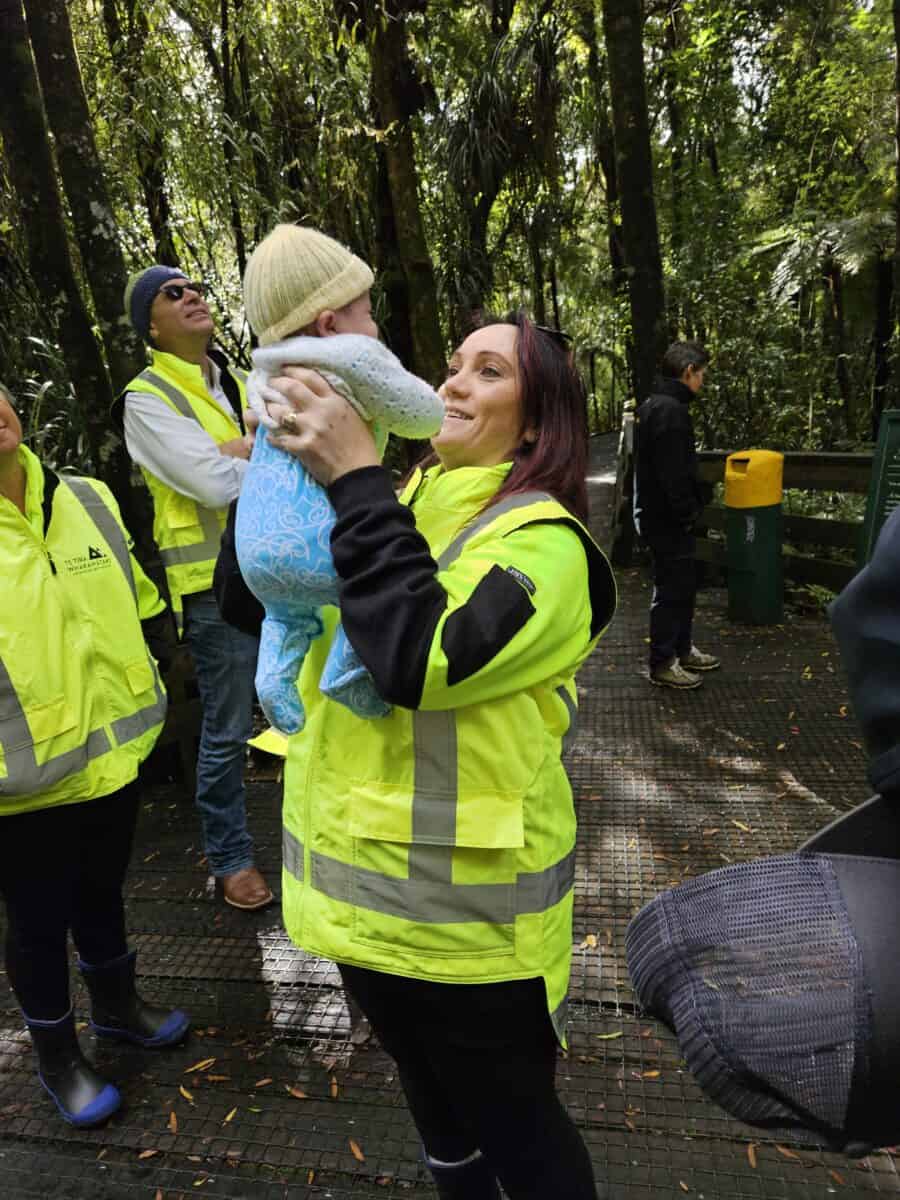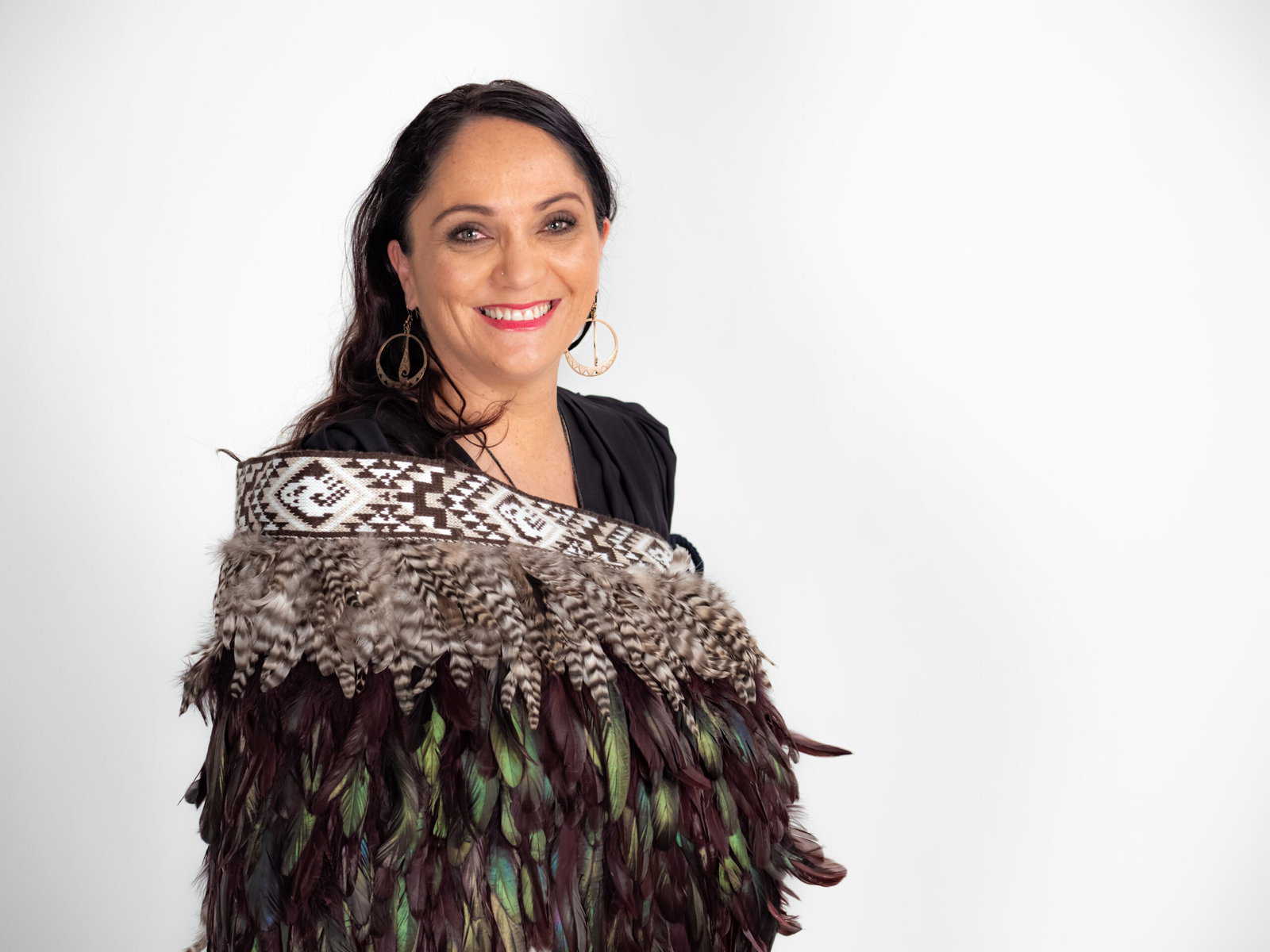Melanie Mark-Shadbolt
Ngāti Porou, Ngāti Kahungunu ki Wairarapa, Te Arawa (Ngāti Kea Ngāti Tuara), Te Atiawa, Ngāti Raukawa me Ngāti Tūwharetoa
Director Māori at NZ’s Biological Heritage National Science Challenge and CEO of Te Tira Whakamātaki.
Where did you grow up and where do you live now?
I was born in Waiouru, but as an army brat I lived everywhere including a stint in Oman. However, I’ve spent most of my life in and around Ōtautahi Christchurch including Rangiora, which is where I live now.
What are your earliest memories of nature/the environment?
My earliest memories of nature are family trips to lakes, hunting and fishing with my dad and brothers, and tending the vegetable garden with my mum.
I’ve been fortunate though to experience lots of different landscapes, and I also have fond memories of climbing desert sand dunes and swimming in the Arabian Sea as a child. As an adult I’ve loved taking my kids camping, boating and hiking in the alpine regions.
One of the memories my Dad likes to share to embarrass me is of the first protest I organised. I was the only protester and I was protesting his attempts to cut down a tree at our house in Christchurch. I lost the battle, the tree came down. I guess the silver lining was the tree was an exotic.
How would you describe your job?
I wear many hats, as do many Māori working in research and environmental spaces. My day-to-day work can be anything from meetings with officials to discuss Māori concepts and aspirations, through to fieldwork with knowledge holders or advocacy for Treaty rights.
My work is varied, fun and a real privilege. It’s a privilege to work for the environment, to support Māori aspirations, and to work with talented, passionate and inspiring people.
What inspired you to follow your chosen career?
My career trajectory hasn’t been typical and to an extent I’ve stumbled into opportunities. However, I’ve been inspired by specific people, causes, places, or topics of interest.
I’ve been inspired by traditional knowledge holders, activists, advocates, researchers and kaitiaki who care about their people, their places and their taonga, and I’m always inspired by places, especially Ka Tiritiri o te Moana and her lakes.
How does your Māori whakapapa/culture influence how you approach your mahi?
My whakapapa influences everything I do and therefore how I approach my mahi – consciously and subconsciously. Consciously, I am aware that being tangata whenua is an honour that comes with responsibility, especially to the whenua! I know that it is an honour to share a familial connection to the environment and a worldview that is holistic by nature and focused on long-term benefits, and that I can utilise the knowledge, networks and ways of working that are core to being Māori to drive my work to protect and restore our taiao. Subconsciously, being Māori means there is this underlying drive to do more, to do it faster and make system change now. The duty to care and consult, as well as a responsibility to tiaki (protect) the environment, can be consuming though.

What are your hopes for Māori in this space in the future?
I hope that the Treaty will be honoured in a manner that allows Māori to actively partner in the protection and restoration of our biodiversity.
I hope that the next generation has the opportunity to enjoy the environment the way we have, and to be active participants in decision-making around its protection.
I want to see: a Crown Research Institute appoint a Māori Chief Executive; government appoint a Māori Secretary for the Environment or Māori Director-General for the Department of Conservation; and a University appoint a Māori Vice-Chancellor.
I want to see Māori leading in the science and environment spaces, and I want to see Te Ara Paerangi truly give effect to Te Tiriti o Waitangi and protect the gains Māori have made in the system to date.
Caption: Melanie and her moko in Waipoua Forest with TTW team and kaumatua.
How do you think BioHeritage can/will help with this?
The Challenge’s focus on ‘leading by example’, or ‘walking the talk’, means that outcomes for Māori have been a significant focus of its work. Everything from science design, through to science procurement, management and delivery are designed with Māori to support their aspirations and needs.
This means we are able to include a wider set of Māori researchers than other providers, we can create and implement protection plans for mātauranga, and we can show how a Treaty partnership can be enacted in the science research world.
I know that BioHeritage has lifted the expectations and set a baseline for how research should be done with Māori as equal participants and decision-makers. I expect the lessons of the Challenge to influence the RS&I system now and into the future, and I’ll be a active voice holding the system to account if it slips backwards.
Updated: 13 September 2023
